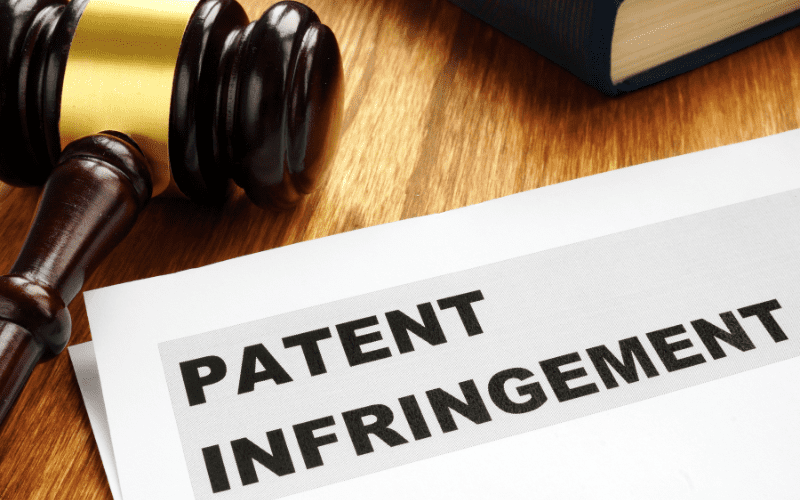Patent Infringement in India
Indian Patents Act 1970 considers falsifying entries in the register and claiming patent rights in an unauthorized way to be punishable criminal offenses. Such penalties are mentioned under chapter XX of the Indian Patents Act, 1970.
The Indian Patent Act 1970 doesn’t specifically mention the consequences of patent infringement in Section 48. However, rights conferred to the patentee are mentioned in Sec 48.
Rights of Patentees
-Where the subject matter of the patent is a product, the exclusive right to prevent third parties, who do not have his consent, from the act of making, using, offering for sale, selling, or importing for those purposes that product in India;
-Where the subject matter of the patent is a process, the exclusive right to prevent third parties, who do not have his consent, from the act of using that process and from the act of using, offering for sale, selling, or importing for those purposes the product obtained directly by that process in India.
What amounts to patent infringement
As per the provisions mentioned in the Indian Patents Act 1970, the following amount as an act of patent infringement:
• The colorable imitation of the invention
• Mechanical Equivalents
• Carrying essential features of the invention
• Immaterial variation in the invention
Mechanical equivalents here mean using substitutes for some features to obtain identical results for the same use as done by the patentee.
The limitation period for instituting a suit for the patent infringement is three years from the date of infringement, and jurisdiction is the geographic area where the infringement has taken place. Also, the burden of proof to establish that an infringement has occurred lies on the patentee.
The following can institute a suit in patent infringement proceedings:
i) Patentee
ii) Exclusive licensee if the license is registered
iii) A compulsory licensee
iv) Assignee
Another critical point to remember is that a suit for infringement can only be instituted when the patent has been sealed. During the phase when the specification has been accepted, published, and oppositions have been called, the suit for infringement cannot be instituted. Also, a separate suit for damages can be instituted for the damages sustained due to the infringement committed during the period between the date of publication and the date of grant.
Remedies/Reliefs provided:
1. Administrative remedy: The patent owner can reach the collector of customs and prohibit the entry of these goods into the Indian market. The patent owner must provide the name of the exporter, consignee, port of entry, name of the ship, etc., details.
2. Injunctions: When a prima facie case and/or balance of convenience is in favor of the plaintiff, an Interim injunction is granted. Whereas after the complete trial, permanent injunctions are granted.
3. Damages or accounts of profits are granted if it is established that on the date of the infringement, the defendant was aware of the prior existence of the patent.
The court may also order the delivery of the infringing goods. This is mentioned in order XXXiX rule 7 of the Civil Procedure Code. As per the provisions mentioned under this relief, a commissioner appointed by the court visits the defendant’s premises and takes the inventory of the infringing articles that are present in the defendant’s premises. These orders are usually passed without sending a notice to the infringer.
Groundless threats for Infringement proceedings:
There may be a specific situation where baseless threats of patent infringement aggrieve a person. Such a person may seek the following reliefs:
1) Injunction against such threats;
2) Ask for damages if any are sustained;
3) A declaration to the effect that the threats are unjustified.
In India, as awareness regarding IP protection is increasing, people are becoming more conscious about securing their patents. A concerned and well-informed strategy toward securing one’s Intellectual property is always the best approach.




